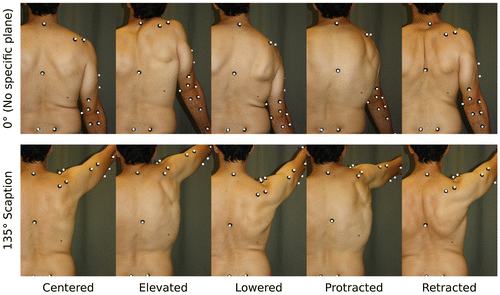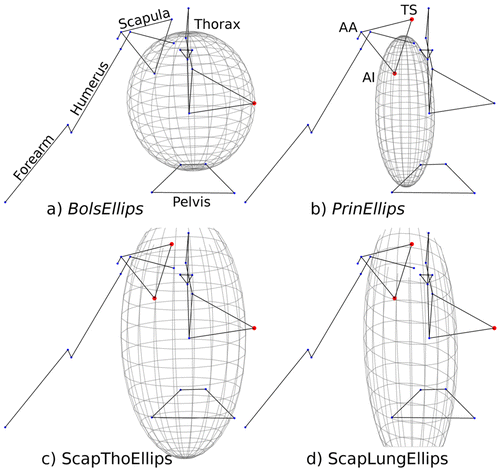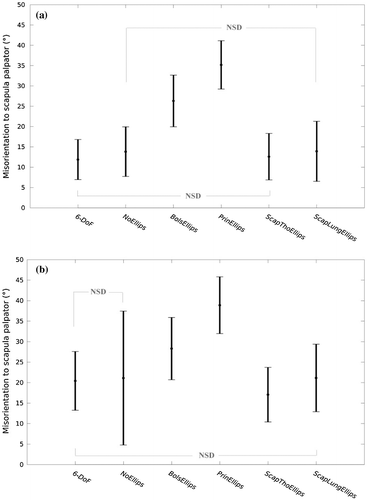Figures & data
Figure 1. A participant equipped with reflective markers performing 10 of the 55 shoulder poses. Each column stands for a scapula pose (Centred, Elevated, Lowered, Protracted, Retracted) while the two rows correspond to two arm elevations (0° and 135° of flexion in the scapular plane).

Figure 2. Illustration of the four kinematic chains integrating ellipsoids: (a) BolsEllips. (b) PrinEllips. (c) ScapThoEllips. (d) ScapLungEllips. The same scale was used for each ellipsoid. AA. AI and TS stand for Angulus Acromialis. Angulus Inferior and Trigonum Spinae.

Table 1. Description of the six kinematics models and their associated ellipsoid. (SC, AC, GH and ST joints mean sternoclavicular, acromioclavicular, glenohumeral and scapulothoracic joints and DoF stands for degrees of freedom. The ellipsoid parameters (in mm) are averaged over the subjects; X, Y, Z are the distances of the ellipsoid centre to the Incisura Jugularis landmark along the X, Y, Z axis; Rx, Ry, Rz are the radii along the X, Y, Z directions).
Table 2. Statistical results: estimated averages and standard scapula misorientations (°).
Figure 3. Mean and standard deviation of the scapula misorientation over all the trials of all subjects for the 6 approaches (6-DoF. NoEllips. BolsEllips. PrinEllips. ScapThoEllips and ScapLungEllips) at (a) low arm elevation (below 90°) and (b) high arm elevation (above 90°). The indication ‘NSD’ indicates if two approaches are not significantly different.

